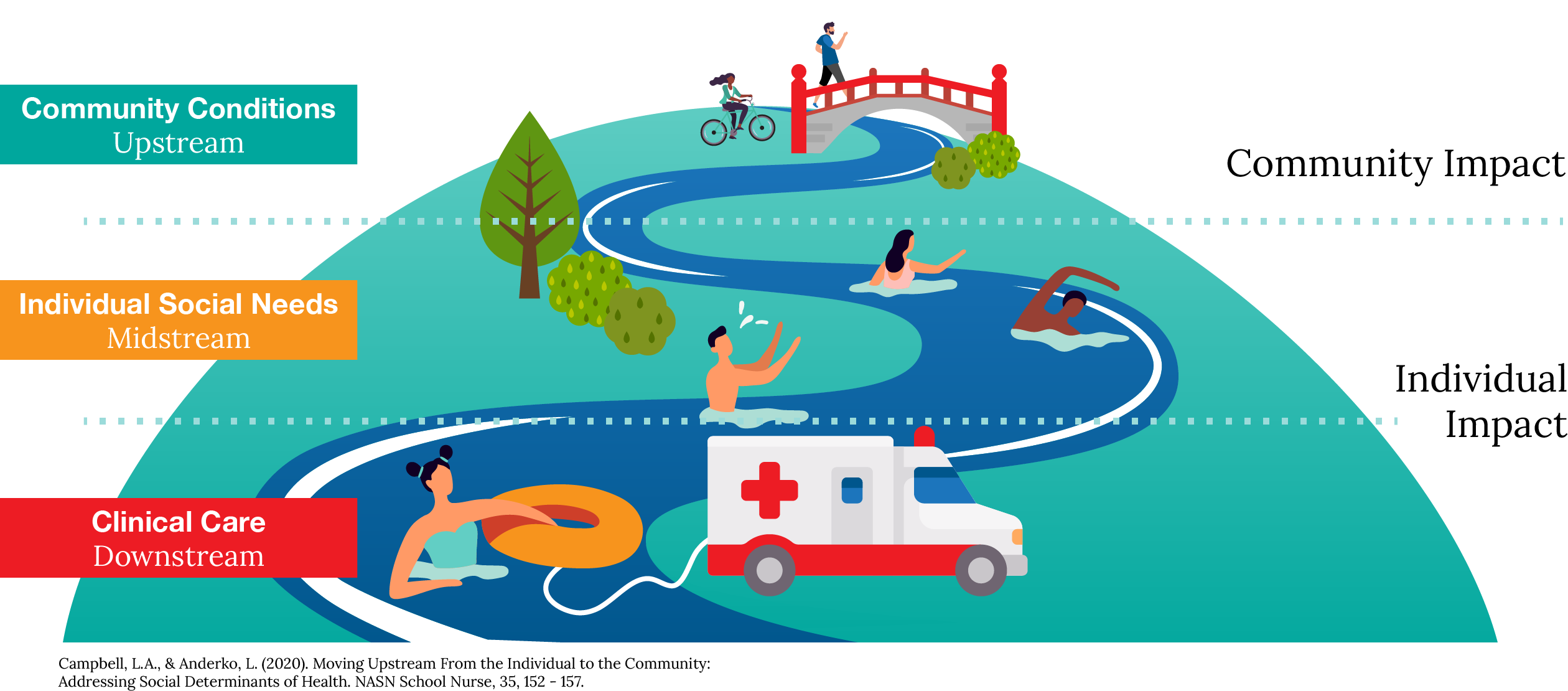Continuing The Conversation About Health Equity: An Employer’s Guide
Health equity has become an essential part of the benefits conversation because of its role in employee health and wellbeing. Yet, for many employers, knowing where to start is still a challenge. They may find it difficult to identify the health inequities affecting their workforce or to decide which solutions would be most helpful.
For employers looking to brush up on their understanding of health equity, this guide will provide a brief overview of the concept, a framework for identifying the social determinants of health, and suggestions for actionable steps they can take to turn conversations into real change.
What is health equity?
Fundamentally, health equity describes a state of healthcare where every individual has equal opportunity to achieve optimal health outcomes. In practice, it means that each person can seek out care when and where they need it, receive appropriate diagnosis and treatment, and face little to no barriers in the process. Achieving true health equity for an employer means that every one of their employees is seen, heard, and valued, with access to benefits able to address their unique experiences. To clarify further, the following analogy may be helpful. Imagine a scenario where an employer needs to provide transportation for their workforce.
If the employer were to distribute bicycles to employees equally, regardless of their size, shape, or physical ability, everyone would receive a bicycle, but it might not be a suitable fit for them to ride on. If the employer were to distribute bicycles equitably, every bicycle would be tailored specifically to meet everyone’s needs.

This is an incredibly important concept for employers to keep in mind when evaluating the effectiveness of the benefits they offer. A common misconception is that since they offer these programs to employees, there aren’t any issues. They should consider that even if employee healthcare benefits seem comprehensive, there may still be gaps where employees are experiencing a disconnect between themselves, their benefits, and the appropriate levels of care that they need. These gaps can lead to issues regarding access, affordability, and overall health outcomes.
That’s where employers should feel empowered to step in and find innovative ways to fill those gaps and support greater health equity among their employees.
What are the social determinants of health?
Social determinants of health (SDOH) are the often-unseen drivers that play a significant role in a person’s health. They are the non-medical conditions in which people are born, grow, live, work, and age that influence health outcomes. Research has shown that up to 80% of a person’s health status is attributable to these conditions.
If an employer was to take a bird’s eye view of health equity, they’d be able to see the ‘stream of care’ for their employees. Along that stream, they’d observe how their employees’ ability to stay healthy is directly affected by the social determinants. Each part of the stream impacts a person’s health status outside of an employer’s field of view. The stream can be broken down into three parts: upstream, midstream, and downstream.

Upstream:
At the top, the upstream, the social determinants of health are considered major drivers for overall health outcomes. They are the societal conditions outside of the primary care office that affect an individual’s health. They can include a person’s gender, ethnicity, immigration status, or other social or political status. They also might include living conditions like housing, transportation, access to care, safety, and economic opportunities.
At this level, interventions are focused on improving the community conditions that an individual may live in. These interventions can include adjusting laws, policies, and regulations to address social determinants and better support the health of all people in a community.
The effects from upstream factors can take different forms amongst an employee population. For example, living in a place with clean outdoor air and excellent access to parks and trails would support healthier habits and behaviors like exercising outdoors, while living somewhere with poor air quality and few green spaces would hinder those activities. Conditions that occur upstream will subsequently impact what will occur further downstream.
Midstream:
At the midstream, the focus is on addressing the individual social needs of a person, in other words, the immediate drivers of health. Employers and benefits leaders thinking about this area of the stream should turn their attention toward understanding employees’ individual experiences and their benefits. Are employees taking full advantage of the benefits we provide? Is there any reason why they wouldn’t be able to? Do they have access to the resources that they need?
Addressing this area of the stream can be achieved by conducting screenings and providing referrals for helpful resources within the community. For example, Premise Health providers are trained to conduct social determinant of health screening through the validated screening tool, The EveryONE Project, from the American Academy of Family Physicians (AAFP). This requires asking patients questions about the immediate social factors that may be affecting their health, like food insecurity, housing stability, substance use, financial resource strain, and more.
Downstream:
The downstream is focused primarily on the clinical care an individual receives. Employees at this point are often in this position due to the influence of the other streams of care. The impact of previously unaddressed needs can influence downstream interventions like chronic condition management for hypertension and diabetes, or receiving acute care as needed.
Employers can observe these effects in the treatment outcomes and health interventions that employees are experiencing. In this case, employers should turn their attention toward the quality of care that employees receive by gathering employee feedback and testimonials, as well as claims-based analysis by a benefits team. Employers should evaluate if employees’ immediate healthcare needs are being addressed appropriately and if they are able to stay healthy in the long term.
What can you do as an employer
Now, having a greater understanding of health equity and how the social determinants of health can affect a population, it’s time to develop a plan and act on it. As a jumping off point, here are three steps employers can take as they work to curate more equitable and inclusive health benefits:
First, connect with employees by gathering feedback. Surveys can be a foundational place to start. If a benefits team asks the right questions, a survey provides employees a space to communicate freely and openly about:
- Their experiences accessing their benefits
- Any gaps that exist
- Solutions they want your benefits team to consider
Next, get a second opinion from the experts. Over the past couple of years, health equity has received considerable coverage in the benefits landscape from credible research institutions and industry consultants. A benefits team tasked with conducting research will find it easier than ever to collect expert commentary and informed insights that they can bring back to the drawing board. More importantly, this research should be able to provide a benefits team with a more grounded and realistic perspective on the scope of solutions that are effective and within reach.
Finally, take healthcare access into your own hands. Many employers may not realize that they have the ability and incentives to improve healthcare access, quality of care, and affordability for their employees. The Business Group on Health suggests some strategies worth considering, including:
- Implementing onsite and virtual care
- Providing access to Centers of Excellence (COEs)
- Partnering with plans and providers aligned on improving health equity outcomes
Incorporating solutions to improve health equity and address social determinants of health for your population isn’t easy, but it also isn’t out of reach. Employers can improve outcomes, and lives, by continuing to focus on these important topics, listening to their people, and choosing benefits that can be tailored to individual needs.
Our approach
At Premise Health, health equity is embedded in our culture and ingrained in how we deliver care. We are committed to identifying barriers and helping our members overcome them in order to achieve their healthiest lives.
We work with organizations across all industries to design healthcare programs that support their benefits goals while delivering high-quality care suited to meet their members’ needs. To learn more about Premise and our approach, reach out to us here.
Next on industry insights.

Client Forum 2025: How Employers Are Taking Health Forward
Read the Blog
Essentials of Heart Health: The Mind-Heart-Body Connection
Read the Blog